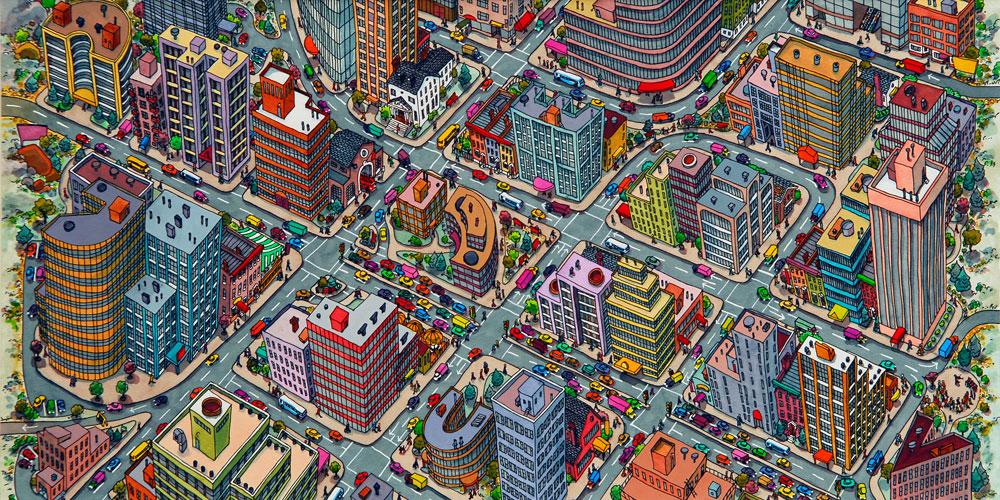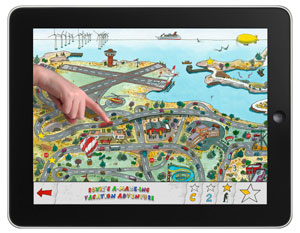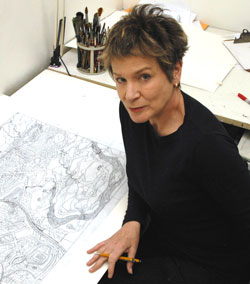
8 things to know about the children’s book industry
UH Mānoa alumna Roxie Munro (’69) is the author/illustrator of more than 40 award-winning nonfiction children's books, 14 New Yorker magazine covers, three interactive game apps for iPhone and iPad and more. Here she gives an insider’s glimpse into the process behind publishing children’s books, or “kidlit.”
1. It all starts with a query letter
When publishing a children’s book, you generally send a short snappy query letter to publishers or agents asking if they would be interested in looking at your book project. You do NOT send the whole manuscript before you get an answer to your query. If they are interested, you send the proposal, and for a picture book (other than nonfiction) you send the whole manuscript; if it is a chapter book, middle grade, or YA (young adult) you send the proposal and synopsis and maybe a couple sample chapters to show writing style.
 2. It takes about two years to publish a children’s book
2. It takes about two years to publish a children’s book
From the time you sign the contract for a picture book to when it appears in the bookstore is generally two years, by which time you’ve practically forgotten about it!
3. Having an agent is key
These days you need an agent, which is as hard to get as a publisher. Most children’s book publishers do not take unsolicited projects. Agents have also now taken on an editor’s role – they often suggest edits and changes before they submit to publishers.
4. Matching illustrations with text is a delicate art
If you have written a children’s book and are not an artist, and want to submit it to an agent or publisher, DO NOT
- Do the art yourself
- Ask a talented friend or relative to do the art
- Hire an illustrator
It is the editor’s job to match illustrator and writer. They will judge the manuscript on its own merits, and assign an illustrator, who brings an extra level and/or enhancement to the work, and is often more well-known than the writer. Unless you are also an artist, it is a sign of naivety to submit it already illustrated, regardless of what your “vision” is.
5. Publishing companies vary
Publishers have identities and brands, just like shoe designers, retail stores, car companies, etc. So those who publish children’s books specialize in various genres: some do nonfiction; some do trade books (for the institutional market [schools and libraries] and are sold in bookstores) and others do mass market books (sold in Walmart, for example); some do fantasy or YA (young adult); some do fiction and maybe splashy picture books; some do educational publishing (text books, reference books and the like); some do novelty books.
6. Following pre-established formats
Trim sizes, formats, word-count, number of pages, and so forth are pretty formatted, depending upon the genre. A picture book is usually 32 pages. YA (young adult), MG (middle grade), chapter books, and some nonfiction varies in number of pages. The trim size of the book is also somewhat formatted. For example, if it is too big (say, taller than 11”) it may not fit on most library or bookstore shelves.
7. Royalties explained
If your book is bought by a mainstream publisher, you get an advance against royalties. Usually 50% when you sign the contract and 50% when you hand in the finished work. Royalties are usually 10-12% of cover price, and are usually sent out twice a year. The first couple of years the publisher holds back a percentage of your royalties, called a “reserve” – payment for books that have been shipped to stores but may be returned. Unlike dresses or shoes, stores can return unsold books!
If you have written the book and someone else illustrates it, you share the royalties and advance…not always 50/50 – it depends upon who is the most famous!
8. The reality
Less than 10-20% of kidlit authors earn out their advances. They can supplement income with school visits, presenting at conferences, selling their illustrations, licensing excerpts of OP (out-of-print) books, selling rights for merchandising, repurposing content for apps or games, and sometimes teaching.
 About Roxie Munro
About Roxie Munro
Roxie Munro is the author/illustrator of more than 40 nonfiction and concept books for children, many using "gamification" to encourage reading, learning, and engagement (including Mazescapes; Amazement Park; the Inside-Outside Books: New York City [New York Times Best Illustrated Award], Washington DC, Texas, London, Paris, and Libraries; Gargoyles, Girders & Glass Houses; Mazeways: A to Z; Go!Go!Go!; Inside-Outside Dinosaurs; and the KIWi Storybooks nonfiction series). Her latest books are Masterpiece Mix, a book about art, and Rodent Rascals."
Her books have been translated into French, Italian, Dutch, Chinese, and Japanese.
For more on Munro, click here.
